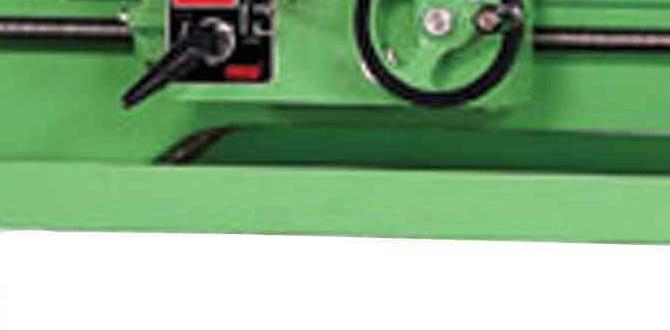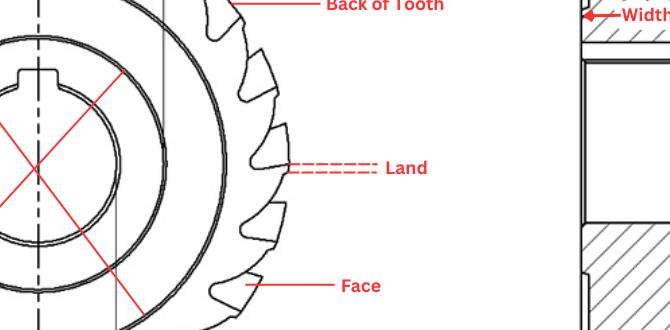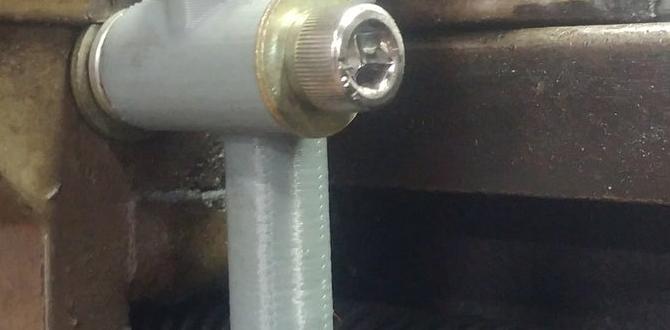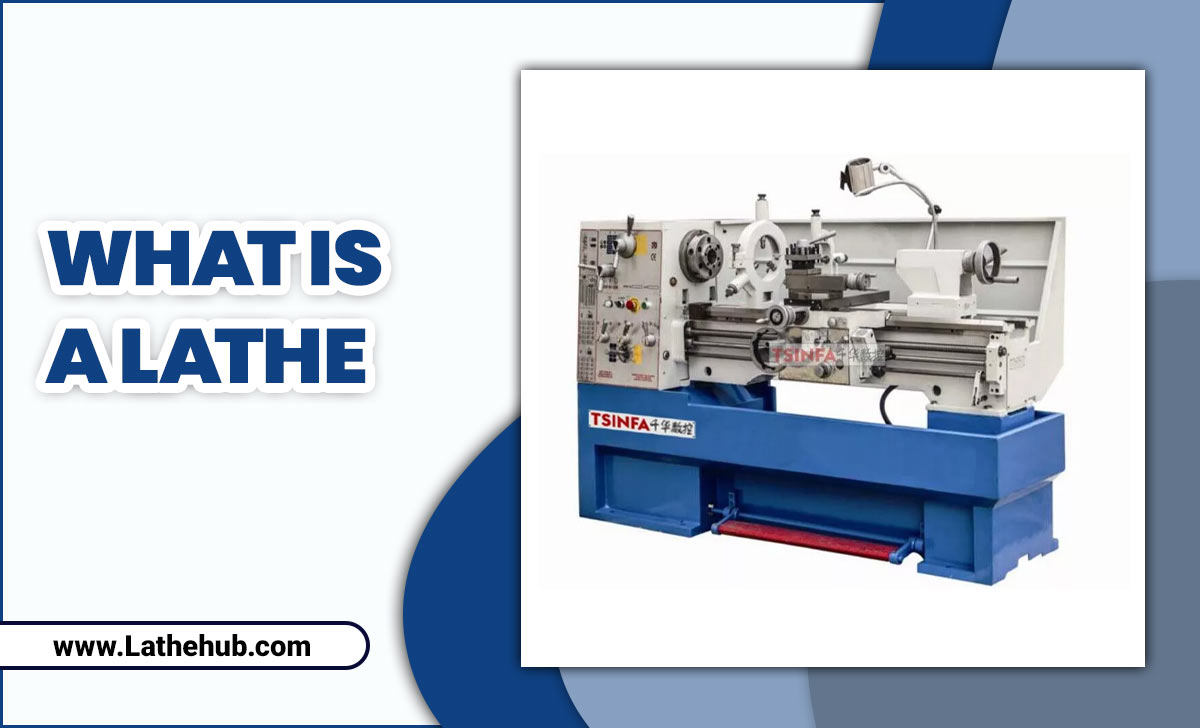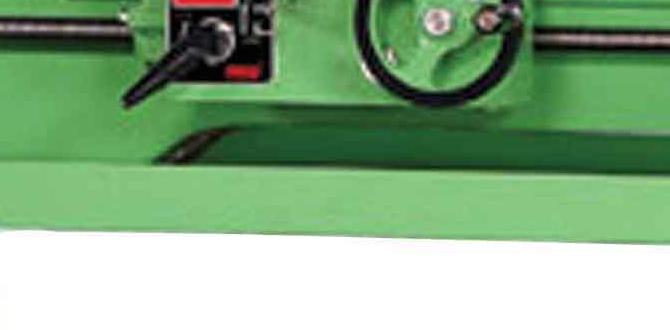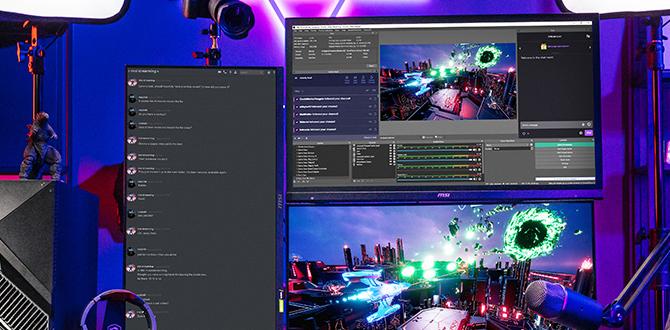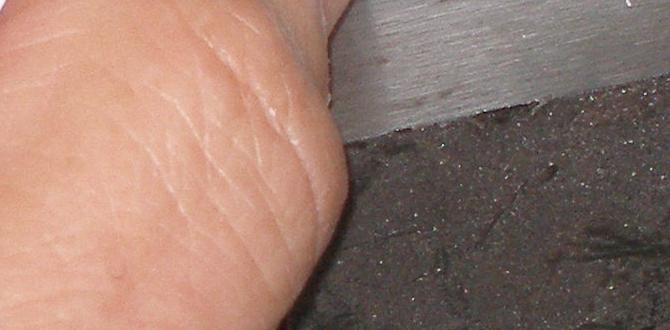Wood lathe vibration can be a real headache, but don’t let it stop you! This guide explains how to find and fix those annoying shakes so you can get back to smooth turning. We’ll walk you through simple steps to identify the causes and get your lathe running steady and true, making your projects safer and more enjoyable.
Is your wood lathe shaking like a wet dog after a bath? That buzzing, rattling, or jarring vibration isn’t just annoying; it can ruin your projects, damage your tools, and even be a safety hazard. As a beginner, spotting the cause of this unwelcome movement can feel like a puzzle. But don’t worry! At Lathe Hub, we believe in making complex things simple. This guide will break down wood lathe vibration analysis into easy, actionable steps, helping you pinpoint what’s causing the wobble and how to fix it. By the end, you’ll have the knowledge to get your lathe running smoothly and confidently.
Why Wood Lathe Vibration Happens and Why It Matters
Vibration on a wood lathe is common, especially for those of us just getting started. It’s that unsettling feeling when the whole machine seems to come alive, jumping and rattling as you try to turn. There are several common culprits, and understanding them is the first step to a solution. Ignoring vibration isn’t an option – it can lead to:
- Poor Surface Finish: Vibration causes the tool to chatter, leaving ridges and an uneven surface on your workpiece.
- Tool Wear: Constant jolting can dull your turning tools faster.
- Machine Damage: Over time, excessive vibration can loosen components, bearings, or even bend parts of your lathe.
- Safety Risks: A vibrating lathe is unpredictable. A workpiece can fly off, or you could lose control of your tools.
The good news is that most wood lathe vibrations are fixable. By systematically checking potential issues, you can restore stability and enjoy the smooth, satisfying process of turning wood.
Common Causes of Wood Lathe Vibration
Let’s break down the most frequent reasons your wood lathe might be vibrating. We’ll look at each one, from the simplest fixes to slightly more involved checks.
1. Unbalanced Workpiece
This is often the biggest offender, especially when starting a turning project. If the wood chunk you’ve mounted isn’t centered or has an uneven shape, it will naturally cause imbalance as it spins.
How to Identify:
- Visual Check: Does the wood look lopsided or have large knots on one side?
- During Initial Rotation: You’ll feel a strong wobble even at low speeds as soon as you start the lathe. The vibration will likely increase dramatically with speed.
- Rough Turning: If you’ve already started shaping, an unbalanced piece will feel like it’s fighting your tool.
How to Fix:
- Rough Shaping: Mount the workpiece and turn it just enough to round off the high spots. This is called “necking out” or creating a “driving center.” This creates a more balanced starting point.
- Centering: Ensure your workpiece is properly centered on the headstock (spindle) and supported by the tailstock. Chucks must be seated correctly.
- Wood Density: Very dense or irregular woods can be challenging. Sometimes, using a slightly smaller piece or roughing it into a more symmetrical shape before mounting can help.
2. Loose Headstock or Tailstock Components
The parts of your lathe that hold the wood – the headstock (where the motor is) and the tailstock (the movable support) – need to be securely fastened. If they’re loose, they can introduce a lot of vibration.
How to Identify:
- Visual and Tactile Check: With the lathe OFF, try to wiggle the headstock and tailstock castings. Do they move independently of the main lathe bed?
- Listen for Rattles: As the lathe starts, listen for distinct rattling sounds coming from these areas.
How to Fix:
- Tighten Locking Levers: The tailstock usually has a lever to lock it in place on the lathe bed. Make sure this is firmly tightened. On some lathes, the headstock can also be locked.
- Check Set Screws/Bolts: Some lathes have bolts or set screws that secure the headstock and tailstock assemblies. Consult your lathe’s manual to locate and tighten these. Use caution not to overtighten if they are cast metal.
3. Improperly Seated Chuck or Faceplate
If you’re using a chuck or faceplate to hold your workpiece, it needs to be mounted perfectly flat and secure against the lathe’s spindle nose. Any offset or wobble here will transfer directly to your workpiece.
How to Identify:
- Runout Test: With the lathe OFF, mount your chuck or faceplate. Try spinning it by hand. Does it feel smooth, or is there a slight catch or wobble? You can also use a dial indicator (if you have one) to measure runout.
- Visual Inspection: Look for any debris between the chuck/faceplate and the spindle threads or flange.
How to Fix:
- Clean Threads: Ensure both the spindle threads and the chuck/faceplate threads are clean and free of dust, metal chips, or old glue.
- Seat Firmly: Mount the chuck or faceplate securely. For screw-on types, tighten them firmly. For chucks that mount with bolts, ensure they are snug and that the chuck is seated fully against the mounting plate.
- Check for Damage: Inspect the threads on both the spindle and the mounting hardware for any damage that might prevent a true fit.
4. Bent Spindle or Drive Center
The spindle is the rotating shaft extending from the headstock, and the drive center (or spur center) is what engages the wood to make it turn. If either of these is bent, it will cause significant runout and vibration.
How to Identify:
- Visual Check: With the lathe OFF, remove any workpiece. Look closely at the tip of the spindle’s drive dog or the spur center. Do you see any obvious bends or damage?
- Runout Test: Mount a clean, known-good chuck or faceplate. With the lathe OFF, use a dial indicator set to zero on the chuck’s face. Slowly rotate the spindle by hand. Any reading other than zero indicates runout. Alternatively, you can use a sharp pencil held against the spindle nose and watch where the point traces as you turn it slowly.
How to Fix:
- Spindle: If the spindle itself is bent, this is a more serious issue. It usually requires professional repair or replacement of the headstock. It’s a good idea to contact the manufacturer or a reputable repair shop.
- Drive Center/Spur Center: If the spur center is bent, it’s usually inexpensive to replace. They are consumable parts.
5. Worn or Damaged Lathe Bearings
The bearings inside your lathe’s headstock allow the spindle to rotate smoothly. If these are worn out or damaged, they can cause roughness, noise, and vibration.
How to Identify:
- Listen Carefully: With the lathe OFF, slowly rotate the spindle by hand. Do you hear any grinding, roughness, or catch as you turn it?
- Feel for Play: Try to wiggle the spindle directly. There should be very little or no sideways (radial) play. Some end-play (along the shaft) is normal, but excessive looseness indicates bearing problems.
- Noise at Speed: Worn bearings often make a distinct humming or grinding noise that gets louder as you increase speed.
How to Fix:
- Lubrication: First, ensure your headstock bearings are properly lubricated according to your manual.
- Professional Repair: Replacing headstock bearings is generally a job for a more experienced mechanic or a professional. It involves disassembling the headstock. If you suspect bad bearings, it’s best to consult your lathe’s manual or contact customer support. You can find helpful diagnostic information on bearing failure modes from resources like Machinery Lubrication’s articles on bearing failure.
6. Lathe Structure Not Stable (Bed, Legs, Base)
The entire structure of your lathe needs to be stable. If the lathe itself is rocking or vibrating, it will amplify any workpiece imbalances or mechanical issues.
How to Identify:
- Check Level: Use a spirit level on the lathe bed. Is it perfectly level?
- Wiggle Test: With the lathe OFF, try to rock the entire machine. Does it move on the floor?
- Vibration Transfer: If the lathe is on a flimsy stand or uneven surface, vibrations can transfer and magnify.
How to Fix:
- Leveling Feet: Most professional lathes have adjustable leveling feet. Use a spirit level and adjust these until the bed is perfectly level in all directions.
- Stable Surface: Ensure the lathe is on a solid concrete floor or a very robust workbench.
- Anti-Vibration Mats: For home workshops, placing the lathe on a thick rubber mat can absorb a lot of minor vibrations.
- Secure Mounting: If your lathe has mounting holes, consider bolting it down to a substantial workbench or skid.
7. Tool Rest Misalignment or Worn Tool Rest
The tool rest doesn’t spin, but if it’s not properly positioned or is worn, it can cause your turning tools to chatter against the workpiece, creating vibration.
How to Identify:
- Visual Inspection: Is the tool rest held securely? Is the edge worn or pitted?
- Gap Between Rest and Wood: With the lathe OFF, position the tool rest close to the workpiece. With the tool rest in place, there should be a small, consistent gap (about the thickness of a business card) between the tool rest and where you will engage your cutting tool.
- Angle: For most rough turning, the tool rest should be slightly lower than the center line of the workpiece. For finishing, it might be at center height. An incorrect angle can cause binding.
How to Fix:
- Secure the Tool Rest: Ensure the tool rest post is firmly secured in its banjo (the part that slides on the lathe bed). The banjo itself should be locked tightly to the bed.
- Replace Worn Rest: If the edge of your tool rest is heavily grooved or damaged, consider replacing it.
- Adjust Position: Always position the tool rest as close as possible to the workpiece without touching it. This minimizes the leverage for vibration.
8. Motor or Drive Belt Issues
Problems with the motor mount, drive belts, or pulleys can introduce vibration.
How to Identify:
- Belt Tension: Is the belt too loose or too tight? A loose belt can slip, causing uneven rotation. A belt that’s too tight puts stress on the motor and spindle bearings.
- Belt Condition: Are the belts cracked, worn, or frayed?
- Pulley Alignment: Are the motor pulley and the spindle pulley aligned perfectly? Any misalignment will cause the belt to run unevenly.
- Motor Mount: Is the motor itself securely mounted to its bracket and the lathe frame?
How to Fix:
- Adjust Belt Tension: Consult your manual for the proper belt tension. It should have a slight give, but not be floppy.
- Replace Belts: Worn belts should be replaced.
- Align Pulleys: You can sometimes adjust pulley alignment by adding shims or adjusting the motor mount.
- Tighten Motor Mount: Ensure all bolts securing the motor are tight.
Step-by-Step Wood Lathe Vibration Analysis Process
Now that you know the common causes, let’s put it all together into a methodical approach. Treat this like a detective mission for smooth turning!
Step 1: Observe and Listen (The Visual and Auditory Checks)
Before you touch anything, turn on the lathe at its slowest speed. Close your eyes for a moment. What do you feel? Where does the vibration seem to be strongest? Is it constant, or does it come and go? Does it change with speed?
- Feel: Is it a rhythmic thump, a high-frequency buzz, or a general rattling?
- Listen: Don’t just hear the motor; listen for specific noises. Is it a clunk, a rattle, a hum, a whine? Pinpoint the general area the sound is coming from (spindle, tailstock, base, etc.).
- Look: Is the entire lathe body shaking, or just localized parts? Is the workpiece visibly wobbling?
Step 2: Check the Workpiece and Mounting
This is almost always the first suspect.
- Is the wood blank symmetrical? If not, rough it into a more balanced round shape.
- Is your chuck or faceplate seated properly? Check for debris and ensure it’s snug.
- Is the workpiece driven correctly? If using a spur center and spur drive, ensure the wood is firmly seated on both.
- Can you spin the wood by hand? Does it have flat spots or obvious lumps even before turning on the lathe?
Step 3: Inspect Loose Components
With the lathe OFF, do a thorough physical inspection of all movable parts.
- Tailstock: Wiggle it. Is the locking lever tight?
- Tool Rest Banjo: Make sure it’s clamped securely to the lathe bed.
- Tool Rest: Is it positioned correctly and firmly in the banjo?
- Headstock Components: Check for any visible loose covers or parts (refer to your manual).
Step 4: Test for Runout (Spindle and Chuck)
This step requires a bit more precision.
- Remove your workpiece and chuck/faceplate if possible.
- Visual Inspection: Look at the spindle nose and drive dogs. Any obvious damage?
- Dial Indicator (Recommended): Mount the dial indicator to the tool rest post and zero it on a clean faceplate or chuck. Rotate the spindle by hand. Any movement indicates runout.
- Pencil Method (Alternative): Hold a sharpened pencil steady near the spindle nose or a mounted chuck. Slowly rotate the spindle by hand. A consistent circle indicates true running. If the pencil point traces an oval or skips, there’s runout.
Step 5: Assess Machine Stability
Now, look at the overall machine.
- Is it level? Use a spirit level on the bed.
- Does it rock? Try to push the lathe. Does it wobble on its legs or stand?
- Base/Stand: Is the base of the lathe or stand sturdy and in good condition?
Step 6: Check Drive Components
If the above don’t reveal the issue, look at the motor and belts.
- Belt Tension: Is it correct?
- Belt Condition: Are they smooth or frayed?
- Pulley Alignment: Do the motor pulley and spindle pulley line up?
- Motor Mount: Is the motor securely attached?
Step 7: Advanced Checks (If Necessary)
If vibration persists, it might be time for more complex diagnostics.
- Bearings: Listen for grinding or roughness when spinning the spindle by hand.
- Internal Components: Check your manual for any other user-serviceable parts that could be loose or damaged.
Vibration Troubleshooting Table
Here’s a handy table to summarize common vibration issues and their likely causes:
| Symptom | Likely Cause(s) | Action |
|---|---|---|
| Strong wobble at low speeds, increases with speed. | Unbalanced Workpiece, Poorly Seated Chuck/Faceplate | Balance workpiece, reseat chuck/faceplate, ensure proper drive engagement. |
| Rattling noise from tailstock | Loose Tailstock Locking Lever/Assembly | Tighten tailstock lock, check bolts. |
| Grinding or rough sound when spinning spindle by hand, or at speed. | Worn Headstock Bearings | Lubricate bearings (if applicable), consider professional repair. |

